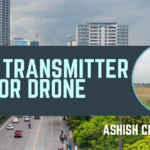Introduction
An Analog FPV system is one of the most widely used setups in the FPV drone world. It provides a low-latency video feed, making it ideal for racing and freestyle flying. Understanding the components and setup of an analog FPV system is crucial for optimal performance.
Components of an Analog FPV System
- FPV Camera – Captures real-time footage from the drone.
- Video Transmitter (VTX) – Sends the video signal wirelessly to the goggles.
- FPV Goggles or Monitor – Displays the live video feed.
- Antennas – Enhances signal transmission and reception.
- Flight Controller (FC) – Integrates with the VTX for On-Screen Display (OSD).
Setting Up an Analog FPV System
Step 1: Connecting the FPV Camera to the VTX
- Most FPV cameras have a video out (VOUT) pin, which connects to the video input (VIN) pin on the VTX.
- Power the camera and VTX using the same voltage source (5V or 12V, depending on the components).
Step 2: Wiring the VTX to the Flight Controller
- Some flight controllers allow an OSD overlay for displaying telemetry data.
- The video signal from the camera goes through the FC before reaching the VTX to add OSD information.
Step 3: Selecting a Video Channel
- Use the VTX buttons or smart audio feature to select a frequency band and channel.
- Ensure that the FPV goggles are tuned to the same frequency for clear video reception.
Step 4: Installing and Configuring FPV Goggles
- Choose FPV goggles with adjustable focal length and resolution.
- Use antennas (omnidirectional for general flying, directional for long-range reception).
Advantages of an Analog FPV System
- Low Latency – Ideal for fast racing and freestyle flights.
- Lightweight & Power Efficient – Does not drain much battery.
- Budget-Friendly – More affordable than digital FPV systems.
- Wide Compatibility – Works with most VTX and goggles.
Stay tuned for our next section on Video Transmitters for FPV Drones!

Pros and Cons of Analog FPV
Pros:
- Low latency, ideal for racing and freestyle.
- Affordable compared to digital FPV.
- Wide range of VTX power options (25mW to 1200mW).
Cons:
- Lower video resolution than digital FPV.
- Susceptible to interference and signal noise.
Choosing the Right Analog FPV Equipment
| Component | Recommended Options |
| FPV Camera | Foxeer, RunCam, Caddx |
| VTX | TBS Unify, AKK, Eachine |
| FPV Goggles | Fat Shark, SkyZone, Eachine |
| Antennas | LHCP/RHCP, Pagoda, Patch |
Conclusion
An analog FPV system is a reliable and cost-effective choice for FPV pilots. Proper setup ensures a stable video feed and enhances the flying experience. Understanding the wiring, VTX channels, and OSD integration helps maximize the potential of an analog FPV setup.






GIPHY App Key not set. Please check settings